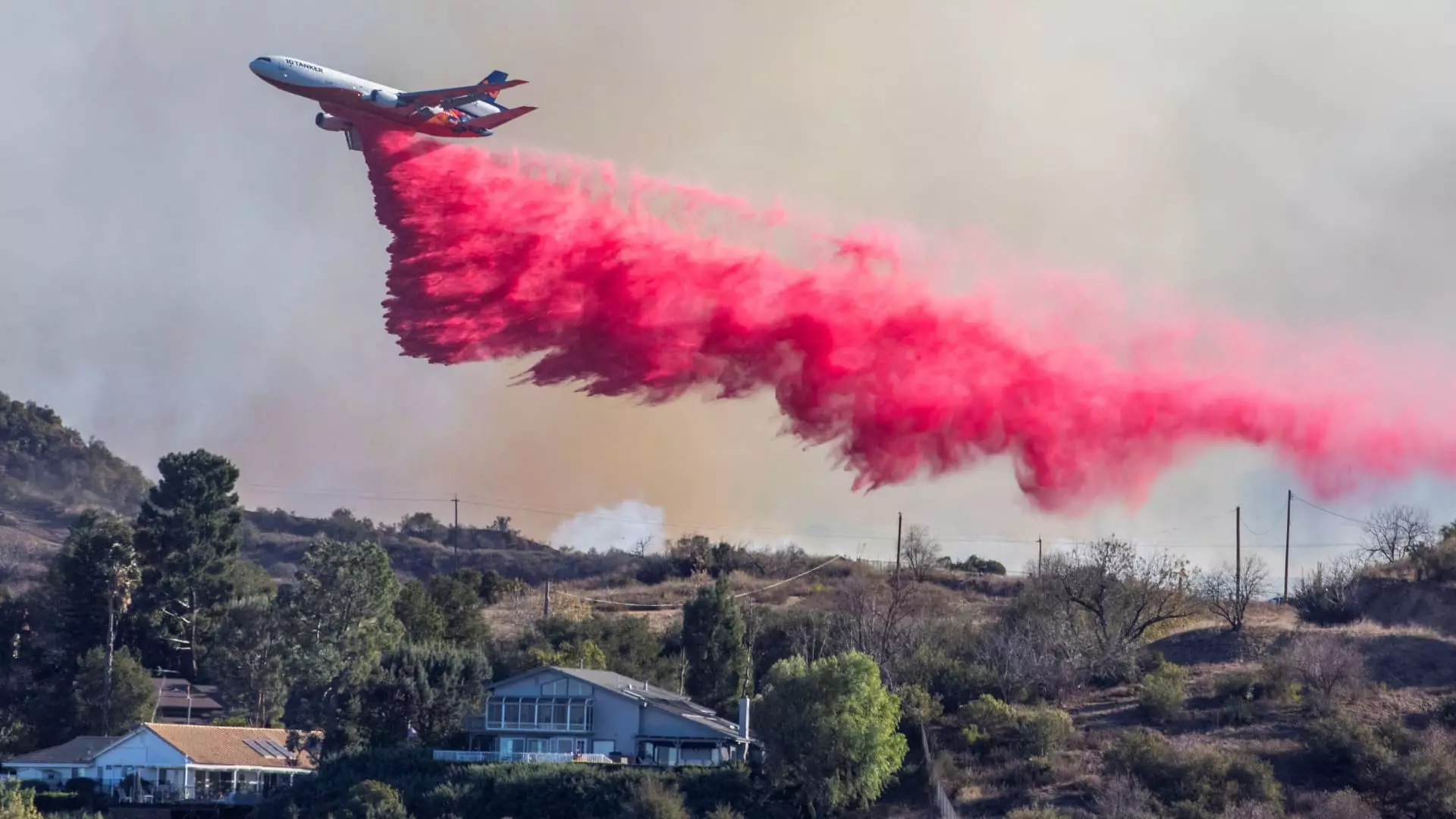The consistently escalating threat of wildfires has become an urgent issue for residents of California, particularly in areas like Los Angeles. As various regions contend with increasingly volatile fire seasons, the aerial firefighting industry has faced unprecedented challenges. Despite being in the off-season, recent months have displayed a concerning trend of more frequent and devastating wildfires, raising critical questions about preparedness, resource allocation, and the overall efficacy of existing firefighting strategies.
The Shift in Wildfire Dynamics
Traditionally, wildfire seasons in the United States ran from April to November, coinciding with drier conditions. Yet, as climate change accelerates, this seasonal window of infernos appears to be expanding. Studies among agencies such as the United Nations Environment Program suggest that fire occurrences will rise in both frequency and intensity throughout the 21st century. This projection aligns with findings from the United States Environmental Protection Agency that indicate a significant uptick in the area devastated by wildfires over the past two decades.
Firefighting companies that offer aerial support, such as 10 Tanker Air Carrier and Bridger Aerospace, are increasingly busier during what should be considered off-peak months. This demand is not just a temporary spike; it is becoming a permanent feature in the realm of wildfire management.
The aerial firefighting fleet in the U.S. consists of both government-operated and privately-owned aircraft. While agencies like Cal Fire possess a robust fleet, the sheer volume of wildfires necessitates a partnership with private companies for effective management. For instance, 10 Tanker operates specialized DC-10 aircraft, known as Very Large Air Tankers (VLATs), capable of dropping thousands of gallons of fire retardant. However, as demand outpaces supply, these companies are facing challenges in ensuring they have enough operational aircraft.
Joel Kerley, CEO of 10 Tanker Air Carrier, has asserted that there are “not enough air tankers to go around.” The recognition of insufficient resources is echoed across the industry, with many companies intending to expand their fleets significantly. If wildfires are going to span both seasons and regions, the ability to respond proficiently will hinge on the availability of adequate aerial support.
Two specific wildfires, the Palisades and Eaton fires, have exemplified the urgent need for preparation in aerial firefighting. Complicated by hurricane-force winds, these fires devastated neighborhoods, underscoring both the extent of destruction achievable during a wildfire and the critical role aerial support plays in mitigating damage. The catastrophic loss—over 37,000 acres consumed and more than 16,000 structures damaged or destroyed—served as a grim reminder that wildfires can erupt unexpectedly, necessitating immediate and robust responses.
Despite the devastation, firefighting companies like 10 Tanker have made significant strides in combating these blazes, reporting the aerial application of more than 273,000 gallons of fire retardant. The speed and effectiveness of response efforts during crisis situations help illuminate the importance of maintaining operational readiness before fire seasons begin—but also point to the deficiencies within current frameworks.
The aircraft used for aerial firefighting have evolved over the years. Capable of dropping massive amounts of water or retardant, modern aircraft are designed to grapple with unique challenges. However, the preparation process—transforming commercial jets into firefighting tankers—requires considerable time and financial investment. As expressed by Kevin McCullough of Aero Air, the lengthy modification process underscores the industry’s difficulties when faced with rising demand for services.
The emphasis on modernization extends beyond just aircraft; the pilots and crews require specialized training to navigate hazardous conditions effectively. The presence of natural elements, such as fierce winds and rugged terrain, further complicates operations, highlighting the need for both skill and precision in aerial firefighting tactics.
The Path Forward
With projections that climate change will exacerbate wildfires in scope and severity, the aerial firefighting community faces an urgent crossroads. Innovations such as De Havilland’s new DHC-515 water-scooper greatly enhance firefighting capabilities and point toward a necessary evolution of resources. However, implementing change takes time, and adapting to evolving threats remains a pressing challenge.
The future demands a multi-faceted approach to effectively tackle the burgeoning wildfire crisis. This includes not only the bolstering of both fleet capacities and pilot training but also proactive measures in community preparedness and wildfire risk reduction. Sustainable changes in public policy, funding for local firefighting agencies, and investment in firefighter training programs are crucial.
The notion of waiting for wildfire seasons to dwindle is no longer a viable option—an immediate and comprehensive approach is essential to safeguard communities against the approaching flames. The advancements in aerial firefighting, coupled with strategic planning, represent a critical frontline as humanity faces a new age of wildfire management.



Leave a Reply